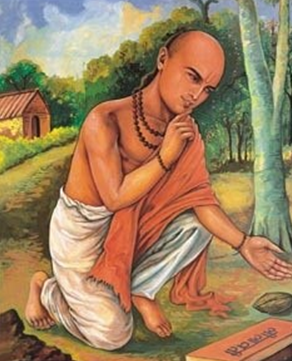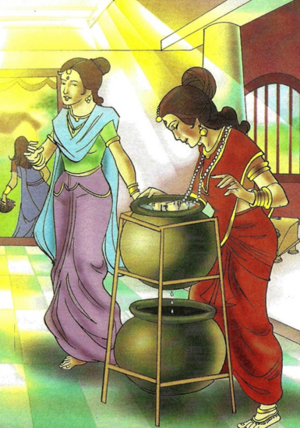Talk:Mathematician Bhāskara (1114–1185 CE) and his daughter Līlāvatī
By Vishal Agarwal
In the 12th century CE, India produced one of its greatest mathematicians—Bhāskara, also known as Bhāskarācārya. Born into a family of mathematicians in Bijapur, Karnataka, he spent much of his career in cities such as Ujjayinī, a major center of learning in central India. His lineage continued the mathematical tradition, as both his son and grandson later became distinguished scholars. Bhāskara was not only a pioneering mathematician and astronomer but also a profound astrologer and a devoted bhakta of Śiva.
Bhāskara’s most celebrated work, the Siddhānta Śiromaṇi, is divided into four parts: Līlāvatī (arithmetic), Bījagaṇita (algebra), Grahagaṇita (planetary mathematics), and Golādhyāya (spherical astronomy). The first of these, Līlāvatī, was named after his beloved daughter, to whom he taught mathematics and astrology with deep affection.
Centuries before Isaac Newton, Bhāskara proposed ideas concerning the force of gravity—stating that celestial bodies attract one another through a natural force. He also emphasized the mathematical significance of the number zero (śūnya), explaining that dividing a number by zero results in infinity (ananta). His insights foreshadowed many concepts of modern mathematics and physics.
The Bad Luck of Līlāvatī
According to a popular account, Bhāskara once prepared a horoscope for his daughter Līlāvatī and was distressed to find that her husband would die soon after their marriage. However, his calculations revealed a brief auspicious period during which, if she were married, her husband would enjoy a long and happy life.
Determined to ensure her happiness, Bhāskara arranged the wedding to take place precisely within that short window. To measure the time accurately, he constructed a jala-yantra (water clock) consisting of two pots—one above the other. The upper vessel, filled with water, had a small hole at the bottom, allowing water to drip into the lower pot at a steady rate. The level of collected water indicated the passage of time.
On the wedding day, Līlāvatī anxiously waited beside the device while her father greeted the groom and guests. When the priests began chanting the mantras, everyone awaited the precise moment indicated by the water level. However, the water seemed unusually slow to drain. When Bhāskara examined the pot, he discovered that a pearl from Līlāvatī’s necklace had accidentally fallen into the vessel and partially blocked the hole. Because of this obstruction, the auspicious time passed before the required water level was reached.
Believing firmly in the accuracy of his astrological calculation, Bhāskara decided not to proceed with the marriage, fearing misfortune for the groom. Heartbroken, father and daughter turned to scholarship to overcome their grief. Bhāskara immersed himself in mathematical research, developing new theorems and methods that would influence generations to come.
He later dedicated the first section of his monumental treatise, the Siddhānta Śiromaṇi, to his daughter, giving it the name Līlāvatī—a timeless tribute blending science, and devotion. This work remains one of the foundational texts of Indian mathematics.


